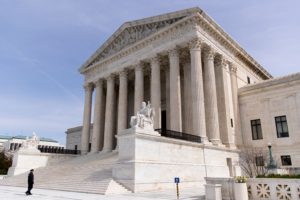Expanding the Court: An American Concept
[AdSense-A]

By Evan Shelton
The appointment of Amy Coney Barrett to the US Supreme Court has resulted in a flood of ideas on how America could possibly progress socially with such a conservative court. Barret is not only extremely conservative, she is also very young for a Supreme Court Justice. Justice Brett Kavanaugh is also a young conservative presence on the court. Considering that these appointments are for life, what can be done to ensure our laws progress with our society?
Let’s talk numbers. With the appointment Justice Barrett, the conservative aspect of the court occupies a dominate six of the nine Supreme Court seats. Nine, where did that number come from? It certainly did not come from the Constitution. The number of Justices meant to occupy the US Supreme Court does not appear anywhere in the Constitution. In fact, the first Supreme had six Justices and the court has grown or shrunk a total of seven times since.
In 1801 John Adams shrunk the court from six to five in an attempt to prevent Thomas Jefferson from appointing too many Justices. An obvious political reason but was deemed perfectly legal due to the lack of definition on the court within the Constitution. Adams’s attempt to limit Jefferson fell flat on its face when Jefferson successfully expanded the court back to six and then to seven in 1807.
Not just Presidents have expanded the court either. Congress took the reins and expanded the court from seven to nine in 1837 under Andrew Jackson. Abraham Lincoln expanded the Supreme Court from nine to ten to protect Union war tactics. Following the Civil War, Congress shrunk the court back to seven in a blatant partisan move in an attempt to limit Andrew Johnson’s ability to enact Reconstruction. Ulysses Grant clapped back and increased the court to nine Justices after the smaller court had ruled “greenback” currency unconstitutional. The expanded court reheard the case and reversed the ruling.
As we can see, the precedents for expanding the court are numerous. Further, the lack of definition within the Constitution prevents even the misguided theories of Originalism from standing in the way of the court expanding. Americans should not consider the court expanding as a form of corruption. As long as the ensuing appointments are qualified for the lifetime appointments they receive. Something that Justice Barrett is simply not. So if one looks for corruption, do not consider the number of Justices on the court, consider the relevant experience of those Justices. Whether it is six, seven, nine or ten, it is the qualifications of the court’s members that matter, not how many there are.
[si-contact-form form=’2′]

